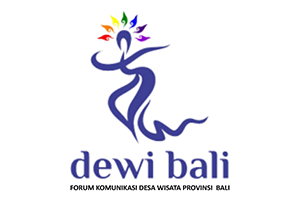Facial Expression as Emotional Diagnostic (FEED): New Opportunities for Tourism and Hospitality (A Literature Review)
Abstract
Facial expressions can be used to understand the emotional needs of tourist travelers. Interpreting facial expressions allows for customizing offers, enhancing emotional engagement, and obtaining customer evaluations. To guide stakeholders in the tourism industry in effectively integrating this technology, this article presents the potential of using facial expressions in tourism. The present approach (Facial Expression as Emotional Diagnostic: FEED) consists of 4 steps: 1) emotional diagnosis, 2) pre-experience customization, 3) emotional engagement during the experience, and 4) customer satisfaction measures. By distinguishing between online and offline situations, we unfold these 4 steps of the FEED process. Further research will address associated technical and ethical challenges, including algorithmic biases and privacy concerns.
Downloads
References
Buell, R. W., Kim, T., & Tsay, C.-J. (2015, November 24). Creating Reciprocal Value Through Operational Transparency. Management Science (Forthcoming), Harvard Business School Technology & Operations Management Unit Working Paper No. 14-115
Ciston, A. B., Forster, C., Brick, T. R., Kühn, S., Verrel, J., & Filevich, E. (2022). Do I look like I'm sure?: Partial metacognitive access to the low-level aspects of one's own facial expressions. Cognition, 225, 105155.
De Wijk RA., & Noldus LPJJ. (2021). Using implicit rather than explicit measures of emotions. Food and Quality Preference 92, 104-125.
De Sainte Maresville, C., & Petr, C. (2023, May). Can facial expressions serve as monitoring of satisfaction or dissatisfaction of consumers in a pre-touristic experience on a destination website? Paper presented at the 10th Conference of the French Association of Tourism Management (AFMAT), Gérone, Spain.
Ekman, P. (1992). An argument for basic emotions. Cognition & Emotion, 6(3-4), 169-200.
Gupta, S., Modgil, S., Lee, CK. et al. (2023)The future is yesterday: Use of AI-driven facial recognition to enhance value in the travel and tourism industry. Inf Syst Front 25, 1179–1195.
Hassin R et Trope Y (2000) Facing faces: Studies on the cognitive aspects of physiognomy. Journal of Personality and Social Psychology 78: 837–852.
Hosany, S., Martin, D., & Woodside, A. G. (2021). Emotions in Tourism: Theoretical Designs, Measurements, Analytics, and Interpretations. Journal of Travel Research, 60(7), 1391-1407.
Jack, R. E., & Schyns, P. G. (2015). The Human Face as a Dynamic Tool for Social Communication. Current biology : CB, 25(14), R621–R634.
Luigi, P., Luca, P., & Piercosimo, R. (2019). An Innovative Face Emotion Recognition-based Platform by using a Mobile Device as a Virtual Tour. Journal of Communications Software and Systems, 15(2), 150-158.
Mitas, O., Bastiaansen, M., & Boode, W. (2022). If You're Happy, I'm Happy: Emotion Contagion at a Tourist Information Center. In R. Augusto Costa, F.
Brandão, Z. Breda, & C. Costa (Eds.), Planning and Managing the Experience Economy in Tourism (pp. 122-140). IGI Global.
Phelps, E. A., Lempert, K. M., & Sokol-Hessner, P. (2014). Emotion and Decision Making: Multiple Modulatory Neural Circuits. Annual Review of Neuroscience, 37, 263-287.
Plutchik, R. (1980). Emotion: Theory, Research, and Experience, Vol. 1: Theories of Emotion. Academic Press.
Prayag, G., Hosany, S., Muskat, B., & Del Chiappa, G. (2017). Understanding the Relationships between Tourists’ Emotional Experiences, Perceived Overall Image, Satisfaction, and Intention to Recommend. Journal of Travel Research, 56(1), 41-54.
Ryu, K.-H., & Lee, M.-S. (2016). A Study on Smart Tourism Based on Face Recognition Using Smartphone.International Journal of Internet, Broadcasting and Communication, 8(4), 39-47.
Volo, S. (2021). The experience of emotion : Directions for tourism design. Annals of Tourism Research, 86.
Walters, G., Sparks, B., & Herington, C. (2012). The Impact of Consumption Vision and Emotion on the Tourism Consumer’s Decision Behavior. Journal of Hospitality & Tourism Research, 36(3), 366-389.
Wang, E. S. T., Tsai, B.-K., Chen, T.-L., & Chang, S.-C. (2012). The influence of emotions displayed and personal selling on customer behaviour intention. The Service Industries Journal, 32(3), 353-366.
Wang, J. F. (2023). Nostalgia in tourism. Current Opinion in Psychology, 49, 101552.
Wang, L., Hou, Y., & Chen, Z. (2021). Are Rich and Diverse Emotions Beneficial? The Impact of Emodiversity on Tourists’ Experiences. Journal of Travel Research, 60(5), 1085-1103.
Yu, T., & Dean, A. M. (2001). The contribution of emotional satisfaction to consumer loyalty. International Journal of Service Industry Management, 12(3), 234-250.
Invibes Advertising. (2023, janvier). Enquête sur les vacances des Français 2023. Invibes Advertising. https://www.invibes.com/fr/fr/

This work is licensed under a Creative Commons Attribution 4.0 International License.
The copyright of the received article shall be assigned to the journal as the publisher of the journal. The intended copyright includes the right to publish the article in various forms (including reprints). The journal maintains the publishing rights to the published articles.




















